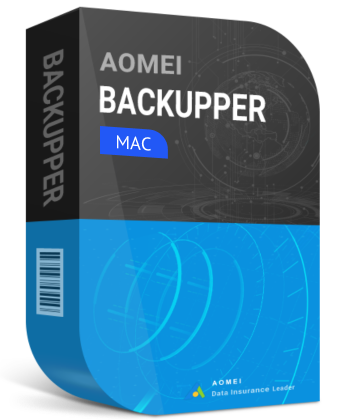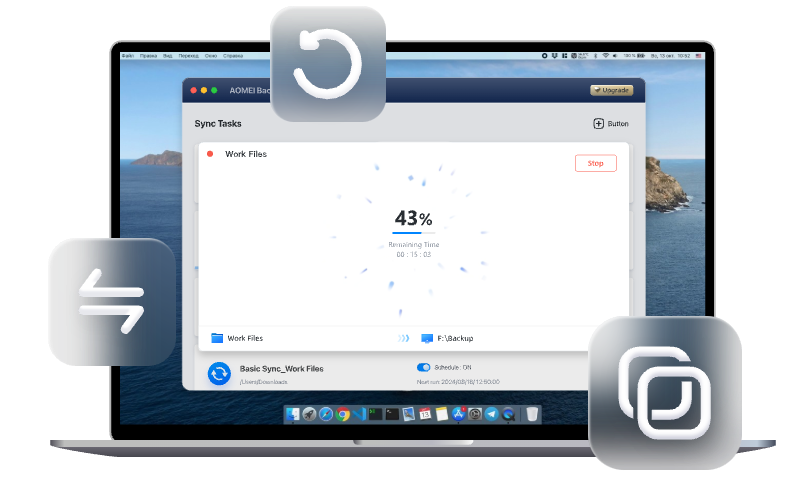Effortlessly Mac Sync Folders: Your Ultimate Guide
This article delves into the world of Mac folder synchronization. It covers various solutions, including built-in macOS features, third-party applications, and cloud services, each explained with detailed steps. The guide addresses common questions and offers practical tips to optimize the syncing process.
Introduction
Maintaining synchronized folders across devices is crucial for productivity and data management. On a Mac, syncing folders ensures that your files are always up-to-date, accessible, and secure. Whether you're working on a project from different locations or need access to important documents on various devices, syncing helps streamline your workflow. This guide will explore the most efficient ways to sync folders on Mac, highlighting the best tools and methods available, from built-in macOS features to third-party applications. By the end, you'll be equipped with the knowledge to keep your files seamlessly synchronized and easily accessible.
Why Sync Folders on Mac?
Syncing folders on a Mac provides several benefits that enhance productivity, accessibility, and data security. Here are key reasons to consider syncing your folders:
⚡Real-Time Updates: Keeping your folders synchronized ensures that any changes made on one device are instantly reflected across all your devices.
⚡Accessibility: With synced folders, you can access your files from anywhere, whether you're using your Mac, iPhone, iPad, or any other connected device.
⚡Data Security: Syncing your files to cloud storage solutions, such as iCloud Drive, provides an additional layer of security.
⚡Automated Backups: Regular syncing acts as an automatic backup mechanism, safeguarding your important data without the need for manual intervention.
⚡Efficient Collaboration: For teams, syncing folders streamlines collaboration by allowing members to work on the same files simultaneously.
By leveraging these benefits, you can enhance your workflow, maintain data integrity, and improve overall efficiency.
Top Solutions for Syncing Folders on Mac
Solution 1: How to Sync Two Folders Using iCloud Drive
iCloud Drive is a built-in feature of macOS that allows you to sync folders across all your Apple devices. This means you can access your documents, photos, and other files from your Mac, iPhone, iPad, and even Windows PC. With iCloud Drive, any changes you make to a file on one device are automatically updated on all your other devices, ensuring you always have the most up-to-date version of your files wherever you are.
To sync two folders using iCloud Drive on a Mac, follow these steps:
1. Open Finder and go to iCloud Drive in the sidebar.
2. Select the file or folder you wish to share and click the Share button.
3 Choose "Collaborate" from the sharing options.
4. Set permissions for who can access and edit the file or folder.
5. Share the invitation via Mail, Messages, or by copying a link.
Solution 2: Sync Folders for Mac Using Dropbox
Dropbox is a widely used third-party cloud service that allows for easy folder syncing across multiple devices, including Macs. It provides a simple and efficient way to ensure your files are accessible and up-to-date no matter where you are. With Dropbox, you can seamlessly collaborate with others by sharing folders and setting permissions.
1. Sign up for a free Dropbox account, or log in if you already have one.
2. Download the Dropbox desktop app from the Dropbox website. Open the downloaded file and drag the Dropbox icon to your Applications folder to install it.
3. Launch the Dropbox app from your Applications folder and sign in with your Dropbox account credentials.
4. Once installed, a Dropbox folder will appear in Finder. Drag and drop the folders you want to sync into this Dropbox folder. These files will automatically sync to the cloud and be accessible from any device where you have Dropbox installed.
5. You can use features like Selective Sync to choose which folders to keep on your Mac and which to keep only in the cloud to save local storage space.
Solution 3: Using Third-Party Application to Sync Two Folders
Ensuring data integrity is essential when syncing two folders. AOMEI Backupper Mac provides an excellent solution for both backing up and syncing your data. Its intuitive interface and powerful features make it easy to protect your files. With AOMEI Backupper, you can sync your data reliably and efficiently, ensuring your information is always secure.

- Effortless Mac Sync: Sync all your files on a Mac for comprehensive data protection.
- Various Sync Options: Offers Basic Sync, Mirror Sync, and Two-Way Sync to meet different synchronization needs.
- Versatile Sync Destinations: Sync files to local storage, cloud services, NAS devices, external hard drives, USB drives, SD cards, and more.
- Fast & Secure: Ensures fast file synchronization using advanced technology, with encryption for data security.
Step 1: Get the AOMEI Backupper Mac software and install it on your Mac. Tap New Task to start the task.
Step 2: Choose the type of synchronization that suits your needs. Mirror Sync or Two-Way Sync is a good choice for synchronizing tasks between two folders.
Basic Sync: Copies files from one location to another without deleting the originals in the source location.
Mirror Sync: Creates an exact copy of the source files at the destination, including deleting any files at the destination that no longer exist in the source.
Two-Way Sync: Keeps files in both the source and destination locations updated, ensuring that changes in either location are mirrored in the other.
Step 3: Choose the sync source and destination.
Step 4: You can adjust sync schedules and options.
You can choose how often to synchronize your files. Options include once, hourly, daily, weekly, or monthly. Additionally, you can set the specific start time and decide whether the system should hibernate or shut down after the sync process is complete.
Under the Options, you can tailor the sync process by File Inclusion, File Exclusion, and Folder Exclusion.
Step 5: Once all settings are configured, click the "Sync" button and wait for the process to finish.
FAQs: About Mac Folder Syncing
Q 1: Is iCloud Drive free to use?
A 1: iCloud Drive offers 5GB of free storage. For more space, you’ll need to purchase additional storage plans.
Q 2: How secure are folder sync apps?
A 2: Most sync apps offer robust security features, including encryption. Always choose reputable services and review their security measures.
Q 3: How do I troubleshoot sync issues?
A 3: Ensure all devices have a stable internet connection, check app settings, and make sure you’re using the latest version of the sync app.
Tips for Effective Folder Syncing
Regular Backups: Ensure you regularly back up important data to avoid loss during syncing issues.
Monitor Sync Status: Frequently check the sync status to ensure all files are up-to-date.
Manage Storage: Keep an eye on storage limits to avoid interruptions in syncing due to lack of space.
Conclusion
Syncing folders on a Mac can streamline your workflow and enhance data accessibility. By utilizing tools like iCloud Drive, Dropbox, and AOMEI Backupper Mac, you can keep your files synchronized across multiple devices effortlessly. Understanding the features and benefits of each solution will help you choose the best method for your needs. Whether you prioritize security, speed, or convenience, this guide has covered all essential aspects to ensure your Mac folder syncing is efficient and reliable.

